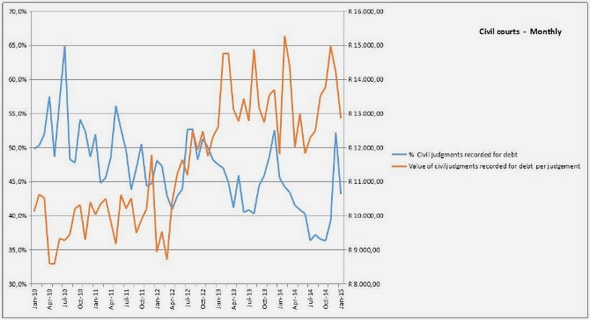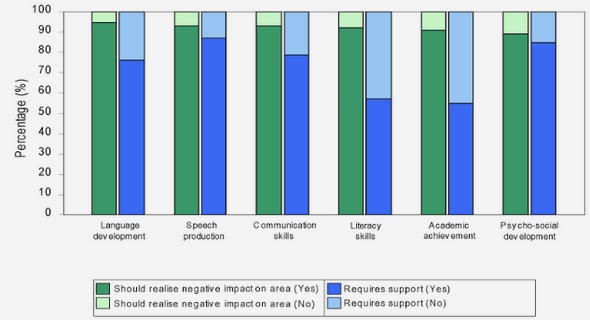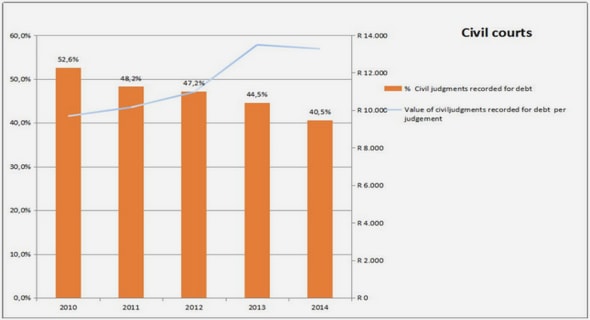Get Complete Project Material File(s) Now! »
Phases in Metastable β titanium alloys
Metastable β Ti-alloys possessed excellent mechanical properties completely depend on their final microstructure. In the metastable β region, there are several phases and phase transformation involved. These phases can be classified into β, α, α″ and ω (athermal ω, isothermal ω and deformation induced ω). The corresponding phase transformation, such as β->α, β->ω, ω->α and β->α″ (stress-induced martensitic transformation), will occur during the thermo-mechanical treatment. The phase transformation of β->α, β->ω, ω->α will be introduced in section 1.3. And the phase transformation β->α″ (stress-induced martensite transformation) upon deformation will be described in section 1.4.
The martensite phase (˝)
Martensitic transformations are diffusionless, shear (displacive) solid state structural transformations. The transformation is most commonly driven by mechanical deformation or by a change in temperature [25]. Thus, the martensite phase can be classified into athermal martensite phase and stress-induced martensite phase α˝ (SIM) based on their formation condition. As for athermal martensite phase, their transformations from β phase were close related to the martensite start temperature (Ms) depending on the β stability [25]. The athermal α˝ transformation is hard to occur in the metastable β Ti-alloys due to the martensite start temperature (Ms) far lower than room temperature. However, the SIM α˝ often occurs in the metastable β Ti-alloys upon deformation, bringing about such peculiar properties as superelasticity and shape memory effects. Thus, the SIM α˝ phase often was investigated in the metastable β Ti-alloys. The detailed information about SIM α˝ transformation was listed in in section 1.4.
Defoatio ehais i etastale β titanium alloys
The deformation mechanism of etastale β Ti-alloys generally included dislocation slip, mechanical twinning and stress-induced phase transformation. Banerjee et al. [15] schematically summarizes the variety of inelastic responses of the β phase to stress (Figure 1.9). It can be seen from Figure 1.9 that dislocation slip transforms to {112}<111>-type twinning and {332}<11>-type twinning with the stailit of the β phase decreasing. At the same time, the stress-induced phase transformation also often occurs in these alloys.
The delectron alloy design method
In the early 1990s, a semi-empiric integrative method, called dele to allo desig ethod, was proposed by Morinaga and colleagues [4, 5]. It has been confirmed by extensive experiments that this method can be used to guide the selection of adapted contents of specific alloying elements, the prediction of phase stability of alloys [6] and alloy properties as well [7]. In the method, employing a molecular orbital method (DV-Xa cluster method [7, 8]), electronic structures were calculated for BCC Ti alloyed with a variety of elements, and two alloying parameters were determined theoretically. One is the bond order (Bo), which is a measure of the covalent bond strength between Ti and an alloying element. The other is the mean d-orbital energy level (Md), which correlates with the electronegativity and the metallic radius of elements. For titanium alloys, the average values of Bo and Md are defined by taking the compositional averages of the parameters and denote them as Bo and Md, respectively. The Bo and Md values, and the chemical compositions of the designed alloys in this stud fo β-Ti alloys are given in Table 2.1. Electronic parameters Bo and Md for each alloy were calculated from the following expressions: �d = Σ �i �d i and �o = Σ �i �o i.
Design of new metastable Ti-alloys with TRIP and TWIP effects
Compared with steels or Co-Cr alloys, the currently major drawbacks of Ti-alloys are both their low ductility (uniform elongation typically less than 0.20) and their lack of work-hardening rate, which limits their application in advanced applications where superior combinations of strength and ductility are required. Indeed, classical Ti-based materials usually display a very low work-hardening rate, bring rapid strain localization and low ductility levels [11]. Nonetheless, it is reported that the activation of {332}<11>-tpe tiig i soe etastale β-Ti alloys [12-15], could result in a significant increase in the work-hardening rate, though this increase has not yet been fully explained in BCC materials. On the other hand, the occurrence of twinning is generally accompanied by a small yield stress [16]. Furthermore, the effect of mechanically induced martensitic transformation on the plastic properties f Ti alloys has hardly been investigated and optimized.
oreover, it is well known that a strategy based on TRIP or TWIP effects is often used to dedicate to a general improvement of the mechanical properties in steels materials [17]. The strategy has been widely investigated for the development of new high performance materials [18]. Taking inspiration from the superior mechanical performances of TRIP and TWIP effects materials, we think that it is possible to design new β metastable Ti-alloys that can enable a combination of activation of mechanical twinning and stress induced martensitic transformation. However, it is quite a challenge to design such alloys showing combined TRIP/TWIP effects, which are expected in resulting large ductility and high work-hardening rate. As a validation of the design strategy, a model of new binary metastable β alloy was firstly designed to gain an improved combination of high ductility and work-hardening rate. The preliminary experimental results have proved that the concept is feasible. Then, a series of ternary alloys are developed to enlarge the family of combined TRIP/TWIP Ti-materials.
Ti-9Mo-6W and Ti-12Mo-xZr ternary alloys
The ingots of Ti-9Mo-6W and Ti-12Mo-xZr (wt. %) were melted by vacuum arc melting furnace (Mini Arc Melting System MAM-1). Each ingot was about 20g. Figure 3.2 shows the photograph of Mini Arc Melting System. It consists of four main parts: a high vacuum chamber with a large viewing glass; the water-cooled electrode (electrode tip made of tungsten); a water-cooled copper base plate and the operating handle. During elaboration of these ternary alloys, we selected Ti-12Mo material as master alloy. Pieces of Ti-12Mo alloy and pieces of high-purity titanium, tungsten or zirconium plates were fully mixed according to the designed composition. The mixtures of raw materials were subsequently melted by tungsten electrode under argon atmosphere. In the melting process, the alloy ingots were melted for at least five times, and flipped over each time before melting, then finally formed into cylinder shape. After melting, the ingots were homogenized at 900°C for 24h under high vacuum of 10-6 Pa using our laboratory self-designed device.
Table of contents :
Table of contents
List of Figures
List of Tables
General introduction
Chapter 1 Metallugial ad phsial akgoud of etastale β titaiu allos
1.1 Introduction
1.2 The alloying elements and the phases i etastale β Ti-alloys
1.2.1 Alloying elements
.. Phases i Metastale β titaiu allos
... The β ad α phase
... The atesite phase α˝
... The ω phase
. Phase tasfoatio i etastale β Ti-alloys
.. β to ω tasfoatio
.. ω to α tasfoatio
.. β to α tasfoatio
. Defoatio ehais i etastale β titaiu allos
1.4.1 Stress-induced martensitic transformation
1.4.2 Mechanical twinning
1.4.3 Dislocation slip
References:
Chapter 2 Design of metastable β titaiu allos shoig TRIP/TWIP effets
2.1 Introduction
2.2 The delectron alloy design method
2.3 Design of new metastale β Ti-alloys with TRIP and TWIP effects
References:
Chapter 3 Experimental procedure
3.1 Introduction
3.2 Fabrication and cold-rolling process
3.2.1 Ti-12Mo binary model alloy
3.2.2 Ti-9Mo-6W and Ti-12Mo-xZr ternary alloys
3.2.3 Cold-rolling procedure
3.3 Thermo-mechanical treatment and thermal analysis
3.3.1 Thermal treatment procedure
3.3.2 Electrical resistivity measurement
3.4 Microstructural characterization methods
3.4.1 Optical microscope and mechanical polishing
3.4.2 X-ray diffraction
3.4.3 Electron backscattered diffraction (EBSD)
3.4.4 Transmission electron microscopy (TEM)
3.5 Mechanical Testing Tools
3.5.1 Vickers hardness Testing
3.5.2 Tensile Testing
References:
Chapter 4 Mehaial ehaio ad iostutual eolutio i etastale β Ti-12Mo titanium
alloy showing combined TRIP/TWIP effects
4.1 Introduction
4.2 Results
4.2.1 Tensile behaviour
4.2.2 Phase transformation characterization
4.2.3 Microstructural evolution
4.2.3.1 OM observations
4.2.3.2 EBSD analysis
4.2.3.3 TEM investigation
4.3 Discussion
4.3.1 Deformation mechanisms
... Defoatio idued ω phase
... “IM α’’ tasfoatio ad ehaial tiig
4.3.2 Activation of deformation mechanism during three stage
work-hardening process
4.4 Conclusion
References
Chapter 5 Microstructural characterization and mechanical behavior of Ti-12Mo alloy subjected to low temperature aging treatment
5.1 Introduction
5.2 Experimental results
5.2.1 Investigation of Ti-12Mo mechanical behavior after LTA treatment
5.2.2 Phase transformation during LTA treatments
5.2.3 Deformation products
5.3 Discussion
5.4 Conclusion
References
Chapter 6 Development of ternary Ti-Mo based alloys showing combined TWIP/TRIP effects
6.1 Introduction
6.2 Results and discussions
6.2.1 Development of Ti-9Mo-6W ternary alloy
6.2.1.1 Tensile performances
6.2.1.2 Microstructural evolution
6.2.2 Ternary Ti-Mo-Zr alloys
6.2.2.1 Mechanical behavior
6.2.2.2 Phase constitutions and microstructure feature
6.3 Conclusion
References
Conclusions
Abstract


